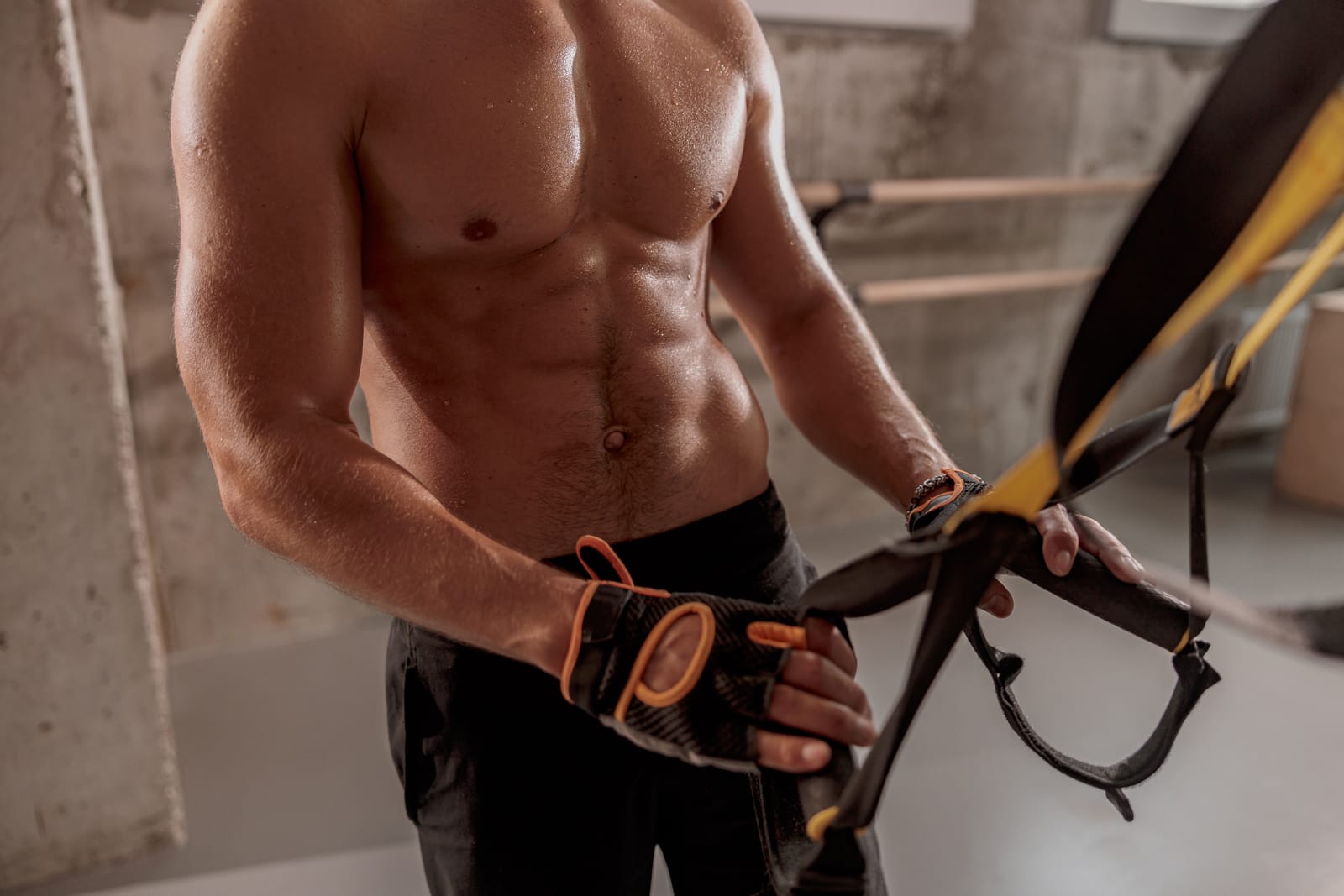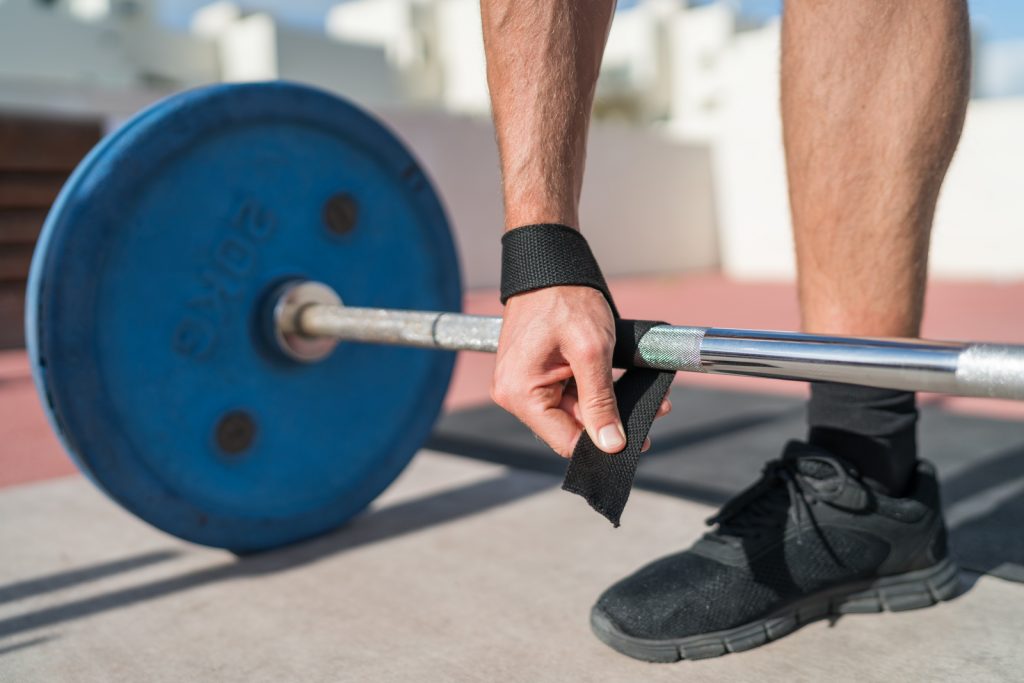
How Gym Straps are Your Key to Injury Free Training
Struggling with grip strength during heavy lifts? Gym straps could be the game-changer you need. While gloves offer some protection, they can hinder your natural grip development. Conversely, gym straps provide added support without compromising your hand muscles’ growth.
By reducing strain on your hands and wrists, these gym straps allow you to focus solely on maximizing gains without worrying about potential injuries. Say goodbye to slipping weights and hello to safer, more effective workouts with the help of gym straps.
Understanding the Benefits of Lifting Straps
Secure Grip on Heavy Weights
Lifting straps are essential for maintaining a secure grip on heavy weights during workouts. Without them, holding onto the barbell or dumbbells can be challenging, especially when performing exercises like deadlifts or rows. By using gym straps, you ensure that the weight stays in your hands throughout the movement.
Weightlifting straps help to distribute the load more evenly across your hands and wrists, reducing the risk of injury due to uneven pressure points. This even distribution is crucial when lifting heavy weights as it prevents potential strain and discomfort.
Reduce Strain on Hands and Forearms
When lifting without straps, much of the stress falls on your hands and forearms, limiting how much weight you can lift comfortably. Gym straps alleviate this strain by transferring some of the workload from these areas to other muscle groups like your back or legs. As a result, you’ll be able to perform more reps with heavier weights without feeling fatigued in your hands.
Who Should Use Lifting Straps
Beginners and Advanced Weightlifters
Lifting straps can be a valuable tool for beginners as they work on building their strength. For those new to weightlifting, maintaining a solid grip on the barbell during heavy lifts can be challenging. By using lifting straps, beginners can focus more on their form and technique rather than worrying about their grip slipping.
On the other hand, advanced weightlifters who are pushing themselves with heavier weights may also find lifting straps beneficial. As they reach higher levels of strength, their grip might become a limiting factor in progressing further. Lifting straps allow advanced lifters to continue increasing the weight without being held back by their grip strength.
Pros:
-
Helps maintain focus on the form
-
Enables progression with heavier weights
Cons:
-
May lead to dependency if overused
-
Not suitable for all exercises
Weak Grip Strength and Injuries
Individuals with weak grip strength due to various reasons such as genetics or lack of training can greatly benefit from using lifting straps. These individuals often struggle to hold onto the bar securely during lifts like deadlifts or pull-ups. Lifting straps provide them with the extra support needed to perform these exercises effectively.
Moreover, people recovering from hand or wrist injuries may still want to engage in weightlifting activities safely without risking further harm. Lifting straps offer them a way to continue training while minimizing strain on their injured areas.
Read more: How Lifting Straps Enhance Your Gym Routine
Protecting Your Hands During Weightlifting
Preventing Hand Injuries
Lifting straps are essential for safety during weightlifting as they prevent calluses, blisters, and torn skin on your hands. These injuries often occur when lifting heavy weights repeatedly without proper protection. By using lifting straps, you create a barrier between your skin and the rough surfaces of weights, reducing the risk of these painful conditions. Imagine how uncomfortable it would be to continue training with sore hands or open wounds caused by friction.
Lifting straps also play a crucial role in maintaining a secure grip on the barbell or dumbbells while working out. They help athletes maintain control over the weights even when their hands get sweaty during intense workouts. This added stability reduces the chances of dropping heavy weights accidentally due to slippery palms, ensuring that you can focus on your workout without worrying about losing your grip mid-lift.
Enhancing Performance
In addition to preventing injuries, lifting straps allow powerlifters and weightlifters to lift heavier loads more comfortably without compromising proper form. With improved grip strength and reduced hand fatigue from gripping heavy weights many times during a workout session, athletes can push themselves further and achieve better results in their training routines.
Cleaner Alternative to Chalk: Lifting Straps

Mess-Free Solution
Lifting straps are a clean alternative to chalk, as they don’t create any mess or leave behind residue. Imagine not having to deal with chalk dust covering your hands and the gym equipment. With lifting straps, you can maintain a strong grip without worrying about leaving a trail of white powder everywhere.
Using lifting straps offers a hygienic solution for maintaining grip during weightlifting sessions. You won’t have to constantly wash your hands or wipe down equipment after each set. This eliminates the hassle of cleaning up chalk dust from different surfaces in the gym, providing a more efficient and tidy workout environment.
Convenient Grip Maintenance
One significant advantage of using lifting straps is that they eliminate the need for continuously reapplying chalk during workouts. Instead of pausing between sets to coat your hands with chalk again, you can focus on your training without interruptions. Lifting straps provide a consistent grip throughout your session, allowing you to concentrate on maximizing your performance rather than dealing with slippery hands.
Tips for Using Wrist Wraps Effectively
Proper Tightness
When using gym straps on your wrists, ensure you wrap them tightly. However, be cautious not to make them too tight, as this might restrict blood flow. The key is to find the right balance between support and comfort.
It’s essential to remember that wrapping your wrists too loosely won’t provide adequate stability during heavy lifts. Conversely, wrapping them excessively tight could lead to discomfort and hinder proper circulation in your hands.
Correct Positioning
Positioning the wraps correctly on your wrists is crucial for maximizing their effectiveness. Ensure they cover the area where you need support the most, typically below the palm but above the wrist joint. This placement offers optimal stability during exercises like bench presses or overhead presses.
Adjusting the tightness of your wrist wraps based on personal preference and exercise requirements can significantly impact your training sessions’ success. Experiment with different levels of tightness to find what works best for you in terms of support and comfort.
Drawbacks of Overusing Lifting Straps
Weaker Grip Strength
Overusing lifting straps can result in a decline in your grip strength. When you rely too much on lifting straps, your hands and forearms don’t have to work as hard to hold onto the weight. This lack of engagement can lead to weaker grip strength over time.
Using lifting straps excessively may hinder the development of important muscles in your forearms that are crucial for overall strength and stability. These muscles play a significant role in various exercises, such as deadlifts, rows, and pull-ups. By constantly depending on lifting straps, you might miss out on strengthening these essential muscle groups.
Finding Balance
To prevent these drawbacks, it’s vital to strike a balance when using lifting straps during workouts. Reserve their use for heavier lifts or when you’re fatigued towards the end of your session. By doing so, you ensure that you develop both grip strength and forearm muscles while still benefiting from the support provided by the lifting straps when needed.
-
Consistent reliance on lifting straps can weaken grip strength.
-
Excessive use may limit forearm muscle development.
Choosing the Right Lifting Straps
Material Consideration
When selecting lifting straps, think about the material: nylon or leather. It boils down to personal preference. Nylon offers flexibility, while leather provides durability and a secure grip.
Consider your workout routine; if you often lift heavy weights or perform explosive movements like snatches or Olympic lifts, choose durable leather straps for added support and stability.
Read Also: How Boxing Straps Enhance Your Training and Safety
Adjustable Lengths and Reinforced Stitching
Look for lifting straps with adjustable lengths, ensuring a snug fit around your wrists. This feature allows for customization based on your hand size and comfort level during lifts like rows or pull-ups.
Choose lifting straps with reinforced stitching to prevent fraying over time from regular use. The reinforced stitching enhances the strap’s longevity, making it a reliable tool during intense workouts.
You now grasp why gym straps are your ultimate sidekick for injury-free workouts. From safeguarding your hands to offering a cleaner alternative to chalk, lifting straps can revolutionize your weightlifting game. Remember, they aren’t a one-size-fits-all solution; choose wisely based on your needs to reap the maximum benefits without falling into the trap of overdependence.
So, go ahead, equip yourself with the right gym straps, protect those hands, and elevate your training sessions to new heights! Your gains await!
